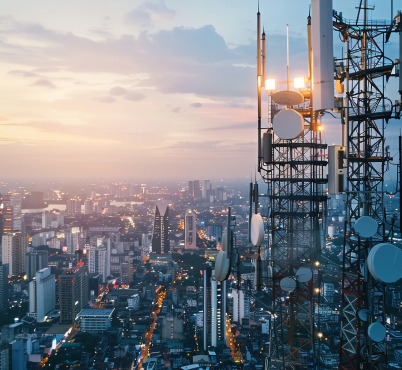- About Us
- Our Services
- Our Services
- Our Solutions
- Our Solutions
- Energy and Utilities Solutions
- Energy and Utilities Solutions
- Discover
- Career
- Contact Us
Aug 14, 2024
The advent of 5G Fixed Wireless Access (FWA) technology is set to revolutionize the home internet landscape. This innovation promises to deliver faster speeds, lower latency, and greater flexibility compared to conventional broadband, potentially reshaping the way consumers and service providers approach internet connectivity.
5G FWA uses the same 5G cellular networks designed for mobile phones to deliver internet services directly to homes. Unlike traditional broadband, which relies on extensive physical infrastructure such as fiber-optic cables, FWA uses radio signals to connect homes to the Internet. This technology leverages the high-frequency, mm waves of 5G, which can support significantly higher data rates and reduced latency.
One of the most compelling advantages of 5G FWA is its potential for faster speeds. Current 5G technology can theoretically offer speeds up to 10 Gbps, although practical speeds are generally lower but still significantly faster than many existing broadband services. For instance, Verizon’s 5G Home Internet service promises download speeds of up to 1 Gbps, compared to the average U.S. broadband speed of about 135 Mbps as reported by Ookla in 2023.
Low latency is another critical benefit. Traditional broadband latency averages around 20-30 milliseconds, whereas 5G can reduce this to as low as 1 millisecond. This improvement is crucial for applications requiring real-time responsiveness, such as online gaming, virtual reality, and telemedicine.
The flexibility of 5G FWA makes it particularly attractive. Deploying conventional broadband infrastructure, especially in rural or underserved areas, is costly and time-consuming. In contrast, 5G FWA requires minimal infrastructure since it relies on wireless connectivity. This makes it easier and faster to deploy, significantly enhancing internet accessibility in remote regions.
Moreover, 5G FWA can provide a competitive alternative to conventional broadband in urban areas, offering customers more choices and potentially driving down prices due to increased competition.
For consumers, the shift to 5G FWA could mean better internet service at potentially lower costs. The higher speeds and lower latency of 5G FWA can support multiple high-bandwidth activities simultaneously, such as streaming 4K videos, online gaming, and remote work, all on the same network without degradation in performance.
Additionally, the ease of installation of 5G FWA can be a significant advantage. Instead of waiting for a technician to install a wired connection, users can often set up their 5G FWA service by simply plugging in a compatible router that connects to the 5G network.
Despite its potential, 5G FWA faces several challenges. The high-frequency millimetre waves used in 5G have a limited range and can be obstructed by buildings and other physical barriers. This limitation necessitates a dense network of small cells to ensure reliable coverage, which can be challenging and costly to implement in some areas.
Compared with fiber-to-the-home (FTTH) and other wireline solutions, FWA offers a variety of benefits including significantly lower rollout costs, rapid service rollout and lower opex. This is because the bulk of the costs and most of the complexity involved in fixed access deployments are associated with the last mile: the portion of the network that reaches the user premises
However, FWA is limited in upload and download performance based on the spectrum band deployed. There are also capacity and speed limitations, given that FWA and mobile services compete for the same cellular network bandwidth.
Also , while 5G infrastructure is expanding rapidly, it is not yet universally available. As of early 2024, 5G networks cover significant urban areas but still lag in rural regions. Thus, while 5G FWA holds great promise, it will take time for its benefits to be fully realized on a broad scale.
For internet service providers, 5G FWA represents both an opportunity and a challenge. On one hand, it offers a new revenue stream and a way to expand services into previously hard-to-reach areas without the significant investment required for wired infrastructure. On the other hand, existing broadband providers may face increased competition from mobile network operators entering the home internet market.
Service providers will need to invest in upgrading their networks to support widespread 5G FWA deployment. This includes not only the 5G infrastructure itself but also backend systems capable of handling the increased data traffic and ensuring network reliability.
In conclusion, the rise of 5G FWA heralds a new era in home internet, promising faster speeds, lower latency, and greater flexibility. While there are challenges to overcome, particularly in terms of infrastructure and coverage, the potential benefits for consumers and the competitive landscape for service providers are significant. As 5G networks continue to expand and mature, 5G FWA is poised to become a formidable competitor to conventional broadband, reshaping the future of home internet connectivity.
 Blog
Blog  Blog
Blog  Blog
Blog  Blog
Blog